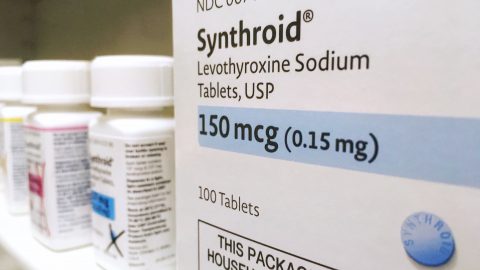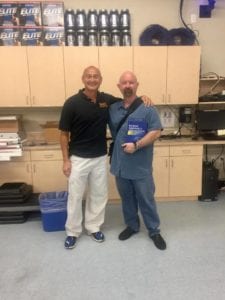Practical Applied Stress Training For Tactical Law Enforcement.
© 2008, 2009
Readers Note: This article can be found in the 2009 Sept-Oct issue of Tactical Response Magazine.
As the demands of tactical law enforcement (SWAT) vary greatly, the training must prepare the SWAT operator for virtually any event. In the most extreme examples, the entire system, body and mind, are stressed to their maximal ability. Anaerobic, aerobic, and neural systems are challenged simultaneously, which will either lead to a successful outcome for the operator, who is both physically and mentally trained for the event, or it will end badly.
Because these systems can and will be challenged simultaneously under “real world” conditions, it stands to reason training should be conducted that follows the pattern of “real world” events the operator may face.
It’s the common practice for the majority of SWAT teams to train diligently on their firearms skills and tactics, while hitting the gym or the road as a separate training rotation.
True applied stress training for SWAT should endeavor to parallel what the “real world” event may demand, which is the simultaneous demands on shooting proficiency, as well as anaerobic and aerobic energy systems which will greatly impact the operators abilities to perform under such pressure.
” Nine of us used this type of training to prepare for the CT SWAT Challenge. It was the toughest training I’ve ever done, and I loved every minute of it. I felt like I was in the best physical condition of my life and our shooting capabilities under stress improved also, which is an essential skill in our line of work. It’s one thing to walk through a shooting exercise and put some rounds on target, but when you simulate the adrenalin rush and physical exertion of a real mission, it’s a whole new ballgame.“
– Sgt. Jim Vaglica, NEMLEC SWAT/RRT
The most advanced shooter in great physical condition will find his marksmanship severely degraded when forced to shoot under intense physical stress. As expected, the operator who is not in adequate physical condition to begin with, can expect to see his marksmanship go completely “to hell in a hand basket” when put under physical and mental stress no matter how well he shoots under non-stressful conditions at the range. This of course applies to all shooters, non- SWAT LEO or civilian, but those groups are not generally going to face the type of dynamic conditions of SWAT operators who may have to scale a wall in full tac gear, drag a 200lb wounded person to safety, or perhaps carry a fellow operator over his shoulder both of whom are wearing full tactical gear, and doing so under fire.
Uncommon yes, worst case scenario yes, but SWAT must train for worst case scenarios and when called upon; perform their duties at levels not expect of non-SWAT LEO or civilians. This means training that incorporates all possible stress modifiers in combined rotations with shooting drills.
As well-known and respected firearms trainer Jeff Gonzales is known to say during his courses, when expecting students to perform well under situations they are statistically unlikely to face, “it may be statistically unlikely it will happen to you, but being on the wrong end of statistics really sucks.” SWAT operators can’t afford to be on the “wrong end” of statistics no matter how unlikely, thus they must train and prepare for any situation to the best of their abilities.
Firearms instructors have attempted to add stress modifiers – such as a short run followed by pushups for example – before shooting a course of fire for many years. Although an effective method of getting the heart rate up to mimic stress during the shooting rotation, it’s a far cry from the stress placed on the operator who has just pushed a car that wont start out of the line of fire – due to damage inflicted or the Murphy Factor – that may contain a wounded comrade or civilian, who then needs to return effective fire on target. Heart rate will be at full tilt boogie –taxing the cardiopulmonary system – and the musculature responsible for a stable shooting platform, already less stable due to the adrenaline dump experienced, will be at less than optimal conditions.
The only way to perform in such a situation is to have experienced the effects of physical and mental stress on marksmanship skills, and test whether or not your conditioning and shooting skills are up to the task. The only way to prepare for that scenario, is to do it!
“I’ve always thought my shooting skills were very good. This training program added functional training elements that tested my shooting under stress. I found that with great physical exertion prior to shooting I went from a good shot to a marginal shot. After going through this training my stress shooting skills improved immensely and I had fun doing it. Not only did my shooting improve, so did my physical fitness. I found this type of training fits perfectly in the ‘SWAT’ world.”
– Sgt. Steven Keins NEMLEC SWAT/RRT
Practical Applied Stress Training Principles.
This form of training should focus on functional strength, improving bodyweight to strength ratios, dealing unbalanced loads, and overall fitness and conditioning, combined with shooting rotations, that prepares the SWAT operator to perform efficiently under worst case scenarios which greatly improves survivability of dynamic situations SWAT is confronted with.
“High tech” equipment is not required, with rope climbing, wall climbing, phone pole lifting, tire flipping, sand bags, chains, sleds, and other creative functional strength modalities are combined with shooting drills. Borrowing from relevant areas of functional strength and conditioning training that can be applied to this training, be it classic strong man training, Olympic lifting, football, martial arts/MMA, power lifting, Cross Training, etc., is encouraged, but must be intelligently designed and applied to be applicable to tactical LE.
There’s often a disconnect between training hard and training smart, and injuries and overuse syndromes (e.g., tendonitis, etc) are not productive to the operational longevity of the SWAT operator. Taking into account existing injuries is also essential to productivity with such a program. Individuals who work in SWAT tend to be hard charging type-A “can do” personalities that don’t allow barriers to prevent them from mission success. These are the people you want coming through the door when things go ugly…however, the personality type will often work themselves to exhaustion and injury if not properly directed in a competitive environment.
Again, working smart vs. hard is the key to success with this type of training…
The drills are specific to the demands and requirements of SWAT/RRT, SOF, and other groups and or individuals where the ability to shoot under great physical stress is an essential component to success and survival.
Exercise and shooting rotations need to be titrated in intensity and difficulty to both the group and individuals within the group, as there will always be differences, strengths, and weaknesses between individuals within a team. Early testing, of both groups, and individuals, is an essential component of making the experience a productive learning experience vs. simply beating the crap out of the group and sending them home bruised and demoralized! There’s a fine edge between productive training protocols that test the limits of an individuals abilities, and unproductive masochism.
“I had the opportunity to be a SWAT team member for 10 years and initially was not prepared for the rigors of the job. After viewing this course first hand it will prepare you for the physical demands of the job; along with cutting down on injuries due to fatigue and stress.”
– Rodney Best. Boston Police Dept/
Mass Criminal Justice Training Instructor
Again, functional strength and conditioning is stressed simultaneously with shooting efficiency. It’s often the case that exercise related training and marksmanship don’t come together until the officer is in the middle of life and death situation, where the ability to perform is tested as never before, and the outcome unsure.
Drills and Progression
Program design should have a logical progression. For example, the day is usually split into three stages: Stage one is individual testing where a single operator is run through the stage and scored. This gives feedback to both the individual’s fitness levels and shooting abilities under physical stress. Stage two, may be run in two man teams with the stage being similar to stage one, but run in parallel – making for a highly competitive environment between individuals who hate to lose – or the stage may contain sections that require two people to complete: a fireman’s carry of your partner 100 yards up hill, or getting over an 8-10ft wall, scaling mock buildings, flipping 800lb tires, and so on. Shooting drills within the stage may require an individual to complete his shooting stage before the other can move on, and so on. Trainers can be committed to the stage to add additional physical essential training within the stage, such ‘hands on’ weapons retention training.
Shooting drills within the stages are always based on essential shooting skills required by the SWAT operator, such as shooting on the move, shooting from cover, multiple target engagements, shoot/no shoot scenarios, etc. These are of course essential shooting skills for the non-SWAT law officer and well-trained civilian shooter, but the margin for error is essentially zero for the SWAT officer.
Stage Three is often a full team event, where there may be two teams running in parallel in the stage or as a single team, depending the design of the stage and the number of operators on the team.
Think of it as job specific cross-training with guns, which leads to improvements in physical conditioning and improvements in firearms proficiency under “real world” stress conditions.
Additional benefits are improvements in functional whole body strength and conditioning, team building, and the ability to employ this type of training on your own range with a variety of tools. The system is dynamic and flexible, which prevents it being limited to “high tech” specialized equipment.
“I thought I was in good shape until I trained with Will for a SWAT competition last Summer. Will’s training methods and philosophy of combining strenuous physical activity and shooting not only prepared my teammates and myself for the SWAT competition but it has made us change some of our training methods on a regular basis. I would highly recommend Will’s training for any SWAT team. ”
– Sgt. Patrick Towle NEMLEC SWAT
Sample Drills.
A sample drill in the stage one category mentioned above, may be a quarter mile run to a barrier, from which a target at 50 yards is engaged using an M4 carbine. From there, the victim…I mean operator, scales an 8ft wall, goes up 30ft of rope, carries a comrade 100 yards fireman carry style –thus dealing with an unbalanced load- then goes directly onto engage targets with secondary weapon.
A common target drill immediately following the above physical stress modifiers may be: a popper at 25 yards standing freestyle, a popper that activates a swinger at 10 yards (which may or may not be a friendly!), and a classic Mozambique Drill* from 5 yards on a graded scoring target, such as an IDPA target or other that allows graded scoring for head shots, center mass shots, and anything outside those two desired points of impact. The stage is timed and scored against the other individuals who go through the stage. Stages will usually include shoot/no shoot scenarios, as well as different positions (i.e., standing, prone, kneeling using cover, etc.) which challenge the shooters skills, which are already being tested by the fact muscles are tired and heart rate is up…Add full tac gear and a gas mask, and you have a real challenging day!
The above is only a sample stage, there are many possible variations of the stages, and it depends on what’s available for use in the stage, the design and size of the range, the experience level and conditioning of the participants, and other variables.
A stage cycle with generally look like so:
* Pre load skill sets. This is working with the firearms instructor(s) on the shooting skill sets needed for the stage prior to running the stage.
* Shoot the stage minus physical stress modifiers. Shooters will go through the shooting portion of the stage and be scored. The pre stress modifier scores can then be compared the post stress modifier scores.
* Run the full stage with stress modifiers, timed and scored against other shooters and against expected scores for the stage. The better the condition and shooting skills of the operator, the closer the score of the pre and post stress modifier will be.
“The SWAT community in general seems to have embraced the “tactical athlete” idea. I think this is a excellent idea, one that will raise the bar for this high end of the law enforcement profession. Simply put it is easy to walk around with your thigh holster and tactical vest “looking the part”. It is another to have the physical fitness the call requires and not exhaust your ability to perform.”
– Officer Jim Dickey, Waterbury, CT SWAT
Conclusion
This type of training can be a real gut check, team building experience, and to use the F word, a hell of a lot of fun to boot. OK, it’s not so much fun when every muscle in your body is screaming at you and you are two thirds of the way through the physical portion of the stage with a bunch of targets waiting for you to engage (and man those targets get small after all that work!), but I can guarantee you a real sense of satisfaction having finished the event. This is serious training, for serious people, in a serious business, but it’s also a hell of a lot of fun and a genuine learning experience to how well you perform under physical and mental pressure. Is that a bad thing? I think not….see you on the range!
** = AKA the Failure Drill, 2+1 Drill, or Rhodesian Drill.
Bio: Will Brink is owner of Optimal SWAT Training Systems and an adjunct Trainer to Smith & Wesson Training Academy.
Will Brink is the owner of the Brinkzone Blog. Will has over 30 years experience as a respected author, columnist and consultant, to the supplement, fitness, bodybuilding, and weight loss industry and has been extensively published. Will graduated from Harvard University with a concentration in the natural sciences, and is a consultant to major supplement, dairy, and pharmaceutical companies.
His often ground breaking articles can be found in publications such as Lets Live, Muscle Media 2000, MuscleMag International, The Life Extension Magazine, Muscle n Fitness, Inside Karate, Exercise For Men Only, Body International, Power, Oxygen, Penthouse, Women’s World and The Townsend Letter For Doctors.
He’s also been published in peer reviewed journals.
Will is the author of the popular e-books, both accompanied by private members forum access , Bodybuilding Revealed & Fat Loss Revealed.
You can also buy Will’s other books on Amazon, Apple iBook, and Barnes and Noble.








hey,Great article dude! i am Tired of using RSS feeds and do you use twitter?so i can follow you there:D.
PS:Have you thought about putting video to this web site to keep the readers more enjoyed?I think it works.Kind regards, Kina Lauderman
Very nice! I always feel goofy when I find this kind of stuff interesting.